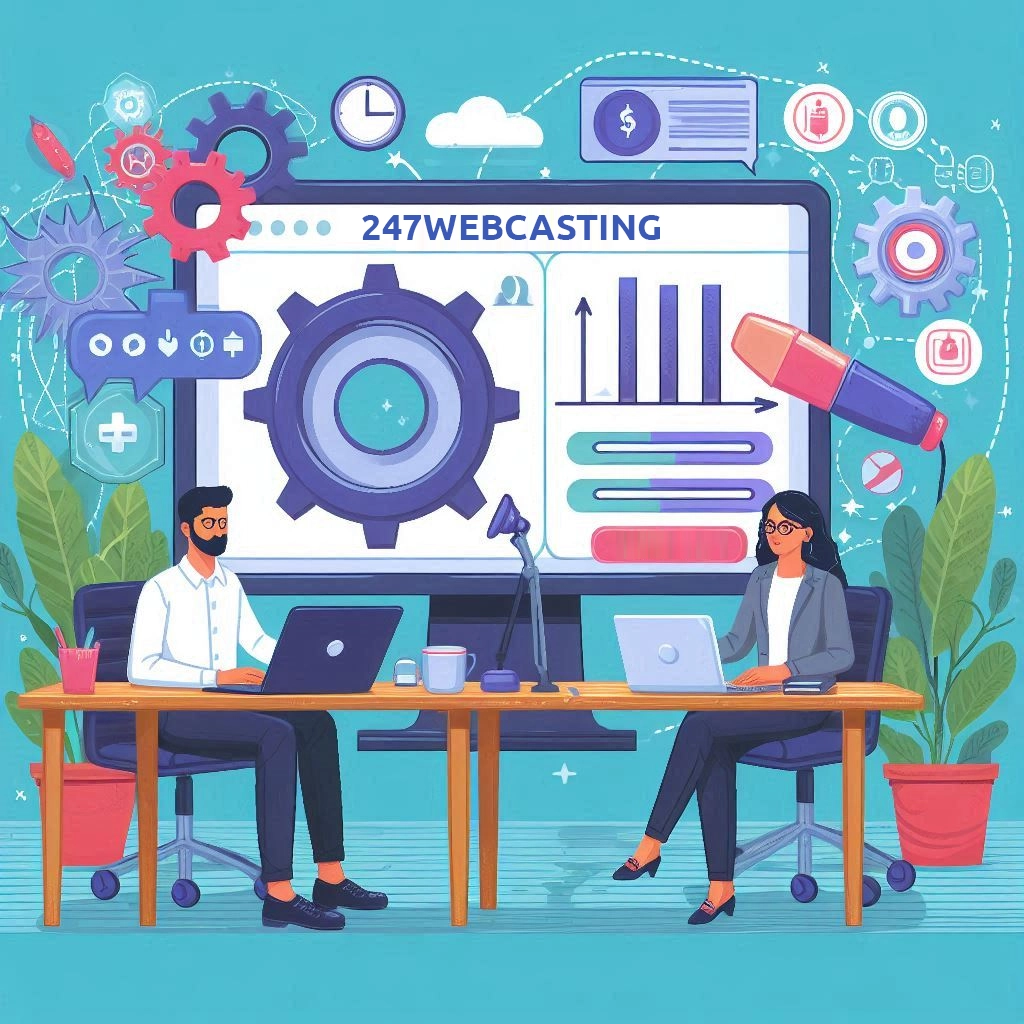Webcasting is a fantastic way of communicating and delivering your message to a targeted audience. It is an online event which makes use of video, audio, and interactive tools which allow both presenter and audience to communicate during the presentation.
A webcast can be done in real-time, but it’s also essential to record and have it as an on-demand presentation, so that people who missed the live version can still watch it online at their most convenient time.
Planning ahead and executing well are two key ingredients of a successful webcast. It may take a few weeks for you and your team to develop the elements of a webcast, but everything will pay off if the execution goes well during the live event and beyond.
Webcasting for beginners can be a daunting activity from the inception of an interesting topic to the actual presentation. But it doesn’t have to be that way especially if you have proper knowledge of what goes on before, during, and after a webcast.
Here are the key factors you need to look into if you are considering webcasting as part of your marketing strategy:
(1) When to use webcasts
Business or marketing webcasts can be used for a number of reasons. Among them are to empower and equip your sales team with knowledge and training, and to directly communicate and engage with your potential customers.
Webcasts can be used in the following situations:
- for product launches – for new products or upgrades for products you already have in the market
- for demand generation – usually done as a post-event strategy to gather data (for analysis) and to better understand your audience (for improved/advanced lead generation)
- to kick-off new product/marketing campaigns – spreading the word about new products or services can be best presented through webcasts; if yours is a product that requires explanation or demonstration, webcasting is an ideal format to show how this product is used in real life situations
- to introduce and/or train for new products/services – this can be done for your company (sales staff, HR, etc.) and/or for your customers (i.e. franchisees, distributors, etc.)
- for sales training – your sales team will thank you for putting up a webcast of the things they need to learn and apply especially if you have new products and promotional campaigns
- for company updates and meetings – webcasts are great for presenting company facts and figures, plans, and other important updates; if you have an international team of sales and marketing people, webcasting is an ideal way to communicate and disseminate information without being location-specific
(2) Planning and promoting your webcast
Identifying your goals and knowing the needs of your potential viewers for an upcoming webcast are the bases of the planning phase. You need to have the best tools and features to run the webcast and to provide great viewer experience to your audience.
The planning phase also involves developing great content for your audience and promotional materials to spread the word about your event.
Don’t overwhelm them with too much words or texts. Instead, create a compelling content with powerful storytelling. Add creative elements such as images that support the narrative. Include interactive elements such as polls, surveys, chat boxes, and Q&A’s within your presentation to keep viewers engaged.
Your marketing materials should be well-written and compelling – from the webcast landing page to email notifications, and to social media content. The goal is to make your event known at least a few weeks ahead, so potential viewers will be able to register and share the webcast details (with the link to your landing page) to their friends.
Part of the planning phase is to also prepare your team and your presenter/s to ensure everyone is in-sync with the goal, content, media tools, and fixes. A well-coordinated webcast team is also a key ingredient in a successful presentation.
(3) Executing your webcast
A webcast that’s carefully planned and promoted can still go wrong if the execution isn’t done effectively.
All of those weeks of hard work can go to waste if:
- your presenter isn’t ready
- your team isn’t coordinated
- and your tools are rusty and lacked backup
Do dry runs a few times to see the flaws among your team and your tools. Fix and check tools to ensure a smooth dry run the next time. Update and finalize your webcast content and have a solid agreement with your presenter. Any addition to the finalized content has the potential to ruin the presentation, so it should be locked in place and agreed upon.
Your content should be engaging and includes the audience in the conversation. Your presenter should also be able to create a friendly conversation and atmosphere that’s welcoming and encouraging for viewers to participate.
Make sure to have backup multimedia tools in case of unexpected glitches. Also, have a backup presenter and sales team around for inquiries from would-be buyers.
(4) Evaluating your webcast
Webcasts should not be treated as ‘touch-and-go’ type of activities. After an event, your marketing team should critique the webcast based on overall performance and audience response.
Gather information based on the following:
- number of people who actually viewed the webcast
- analytics data from the webcast platform you use can provide the following information: audience demographics, level of interest, audience activity, lead score
- campaign effectiveness
- return on investment
- audience reaction to the presentation
- parts of the webcast that need improvement
- what you will do differently for the next webcast
(5) Choosing the best tools for your webcasts
Technologically sound webcasting platforms provide numerous benefits and features that can make a huge difference in presentations. Having reliable and effective tools such as cameras, microphones, reliable computer and high-speed internet are also essential requirements that can help you create a seamless presentation.
The best platform for a webcast should have the following features:
- full-feature event page with registration, user console, and communication tools
- customizable user interface
- use-friendly software
- webcam and multicast support
- user-control capability
- marketing/branding tools and features
- social media marketing capabilities and collaboration tools (i.e. easy integration, buttons, links, etc.)
- interactivity tools (polls, surveys, Q&A, chat, etc.)
- provides real-time analytics
- scalable solutions and features
- mobile-ready
- on-demand viewing
- can handle firewalls/network restrictions
- content localization features
(6) Where to use webcasts
The uses of webcasts are diverse and they are not confined to only serve as marketing strategies for business. There are many real-life scenarios where webcasts are used for various purposes and needs.
Online and offline companies can benefit greatly from webcasts. Product promotions, launches, and sales training are just a few of the reasons to use live and on-demand webcasts for your target market.
Schools and academic organizations can deliver relevant information to students ranging from the admission process, financial aid application procedures, and other relevant guides and how-tos that they can benefit from.
On-demand webcasts for professionals in various industries can make use of the platform to train and disseminate information about their various fields. Examples are webcasts for professionals in the medical field, accounting/finance, retail, as well as other fields such as art and culture, to name a few.
Webcasting offers numerous benefits to its producers. Whether you have a business, you run a school department, or you’re a professional with a passion to share your expertise, a webcast can help you effectively deliver the information to targeted viewers.



